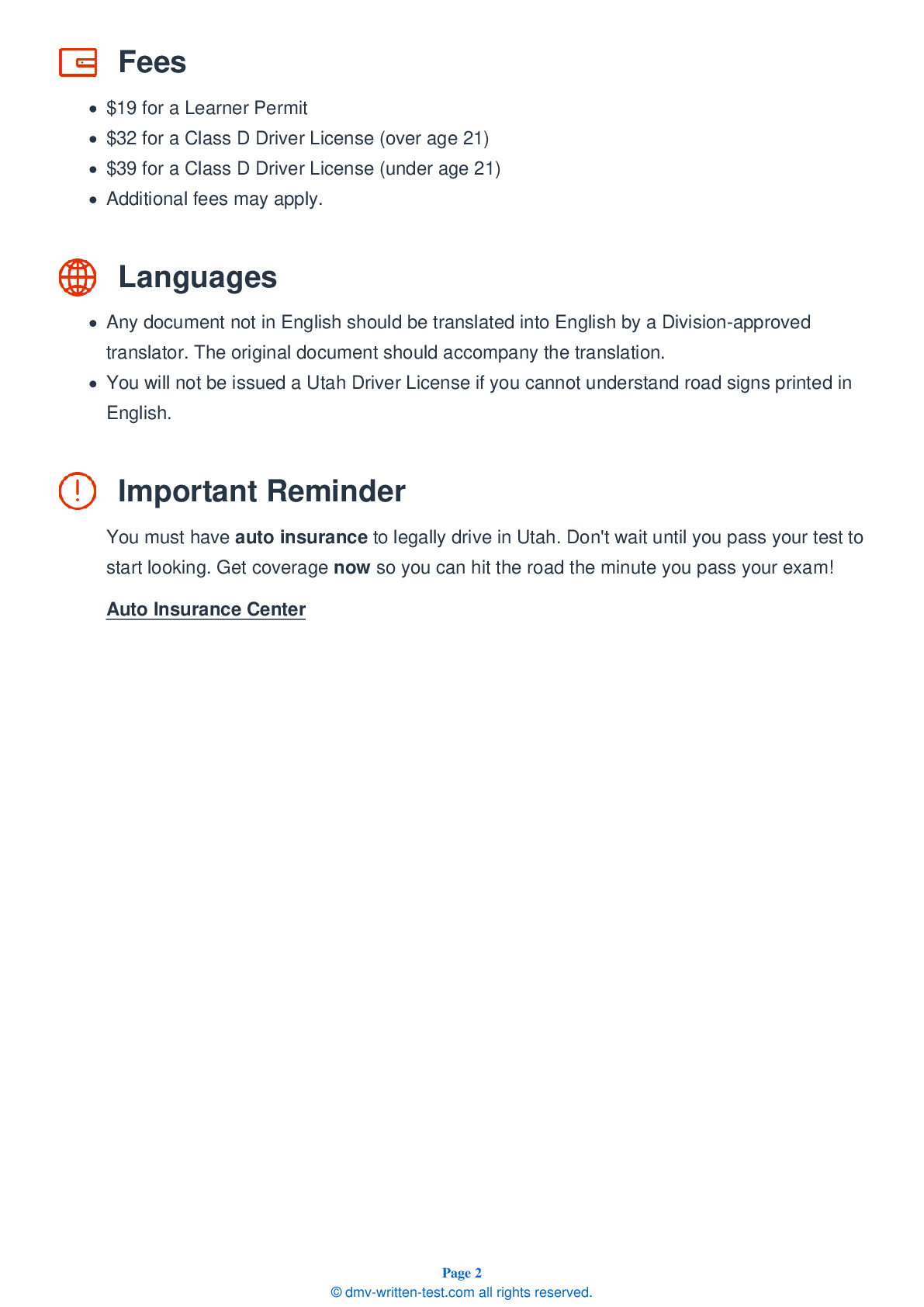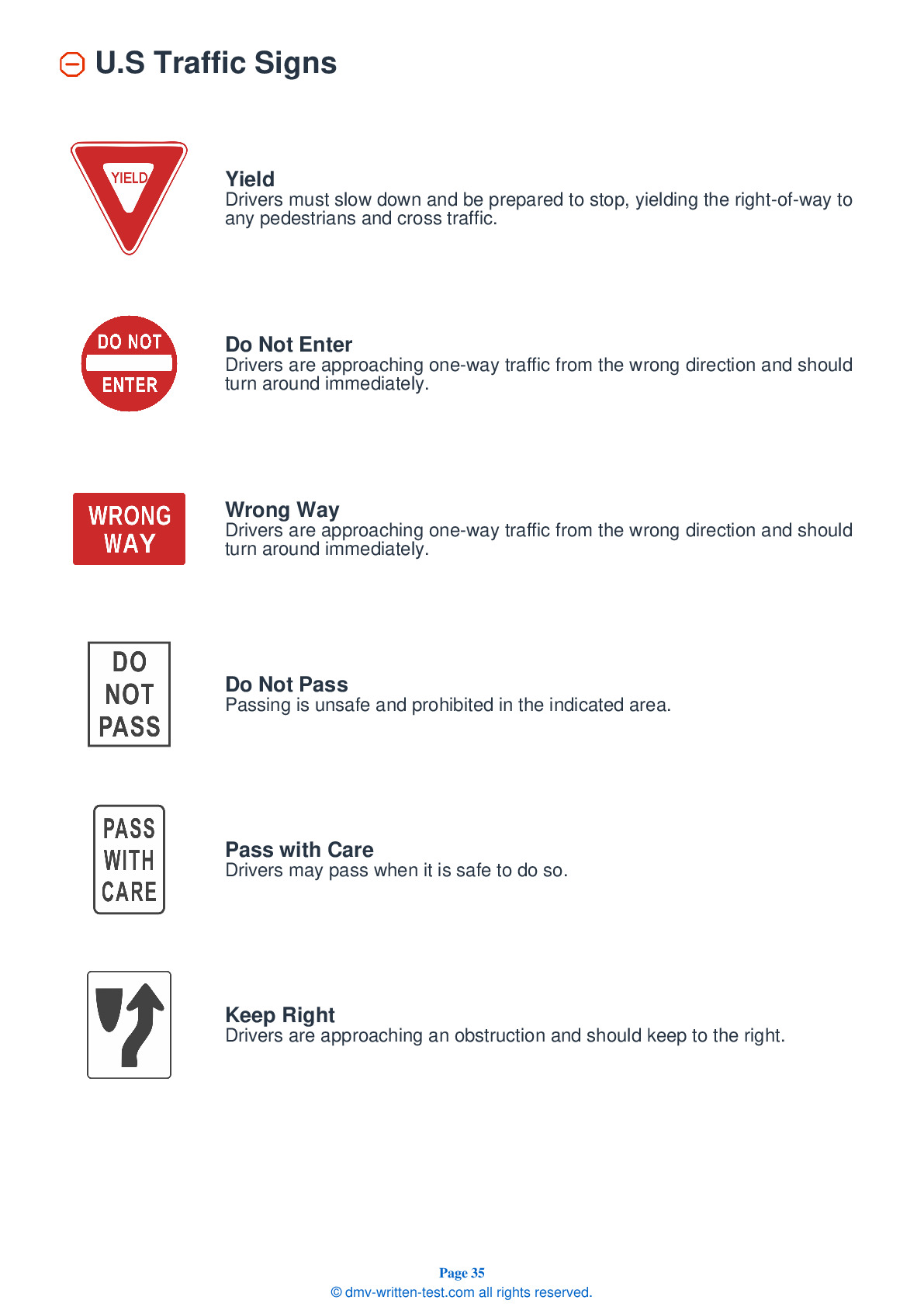2025 Utah Permit Test 23
The following questions are from real DMV written tests. These are some of the actual permit questions you will face in Utah. Each permit practice test question has three answer choices. Select one answer for each question and select "grade this section." You can find this button at the bottom of the drivers license quiz. For a complete list of questions and answers for Utah please visit https://cheat-sheets.dmv-written-test.com/en/utah/car.
Number of Tests
Number of Question
Passing Score
1. You are making a left turn from a two-way street onto a one-way street. When you have completed the turn, your car should be:
Explanation
If you are turning left from a two-way street onto a one-way street, you should complete the turn into the lane closest to the lane you have just left.
2. A speed limit is:
Explanation
A speed limit is the maximum or minimum legal speed you can travel on a road under ideal conditions. You may drive more slowly than the posted speed, but it is illegal to drive any faster. You must drive more slowly where signs or signs indicate a school zone or work zone speed limit. If conditions such as road construction or bad weather make the posted speed unsafe, drive under the speed limit.
3. Parking uphill next to a curb on a two-way street requires:
Explanation
If you are parking uphill on the right side of a street that has a curb, turn your steering wheel to the left and let your car roll back so that the front right tire touches the curb. This way, if your brakes fail, your vehicle will not roll into traffic.
4. A single broken yellow line down the center of a two-lane road indicates:
Explanation
Yellow lines are used to separate traffic moving in opposite directions. Dashed lines indicate that drivers directly next to the line are permitted to pass when it is safe to do so.
5. What color are pavement markings that separate traffic lanes moving in opposite direction?
Explanation
Yellow lines are used in the center of the road to separate lanes of traffic moving in opposite directions.
6. You are involved in an accident and your vehicle is blocking traffic. You should:
Explanation
After a minor collision, move your vehicle off the traveled portion of the roadway, if possible. Do not leave the scene of an accident without identifying yourself and rendering assistance.
7. When driving in bad weather, drivers should:
Explanation
When driving on wet roads, drivers should increase their following distance.
8. You are waiting in the intersection to complete a left turn. You should:
Explanation




